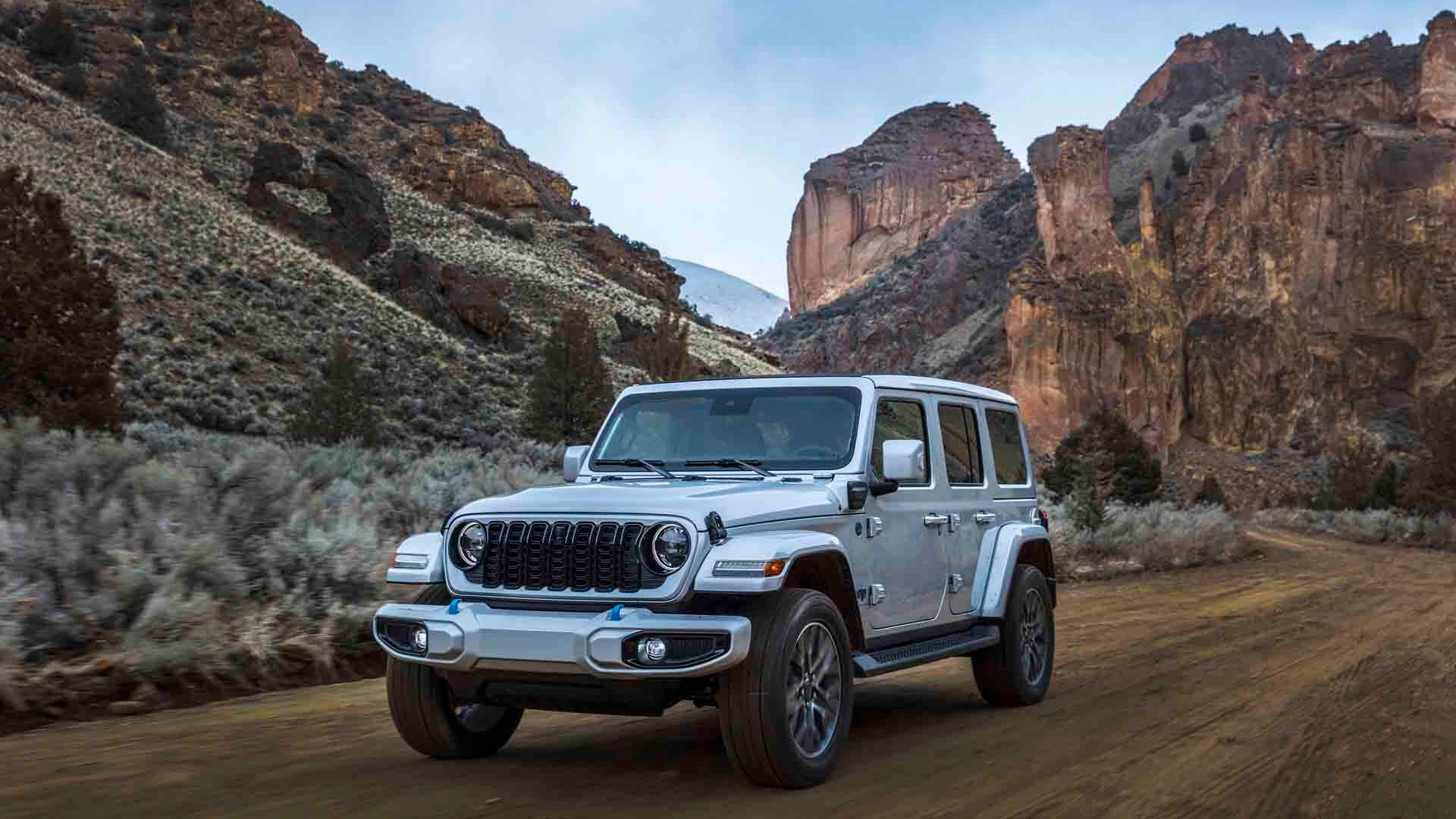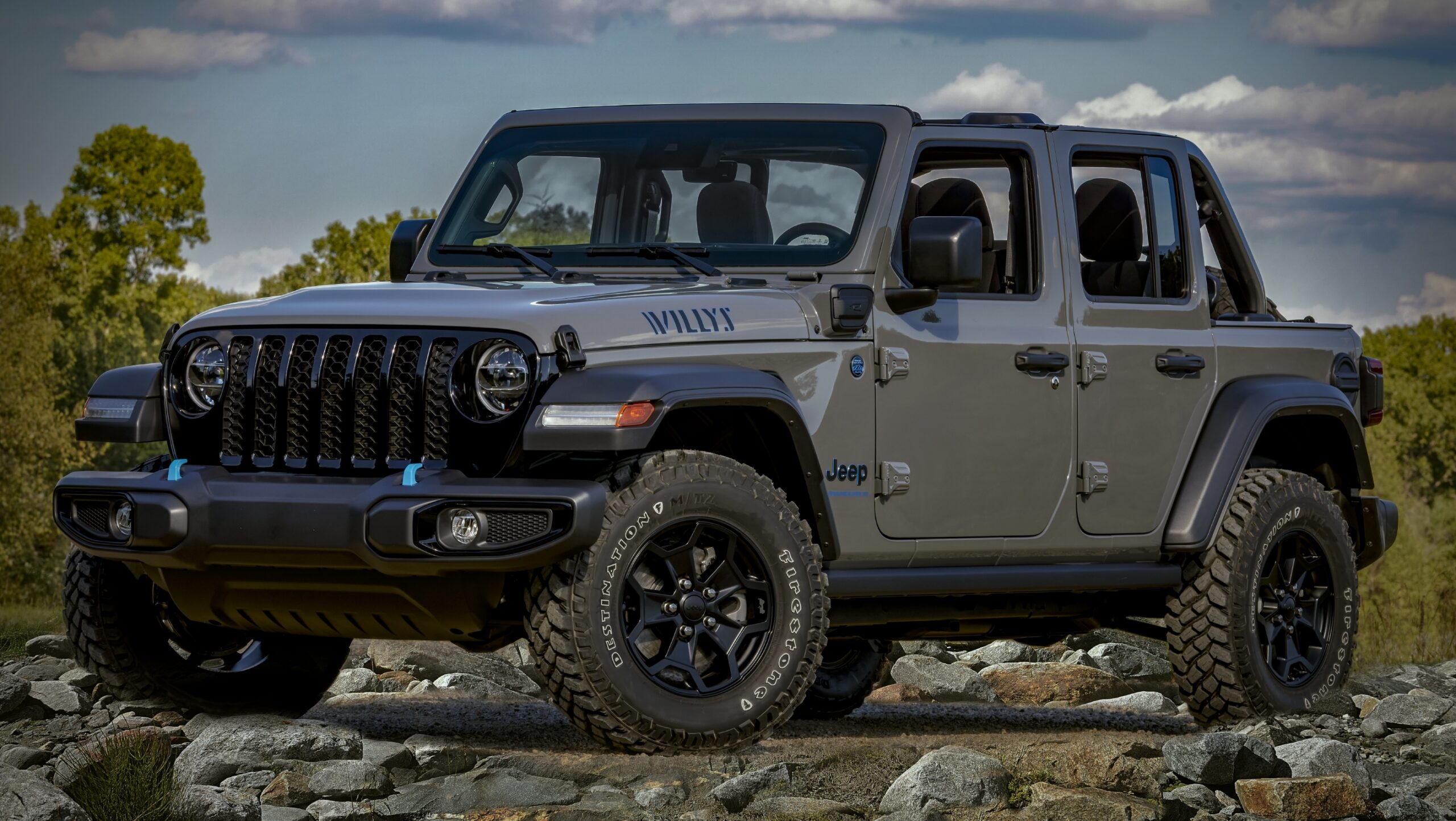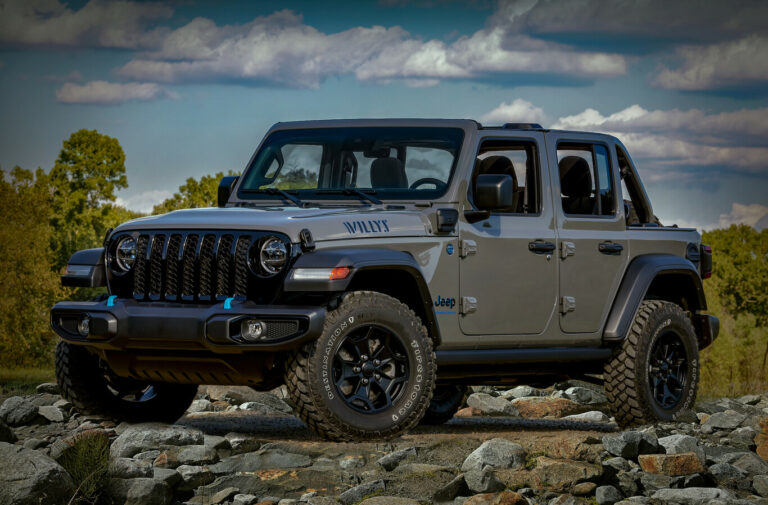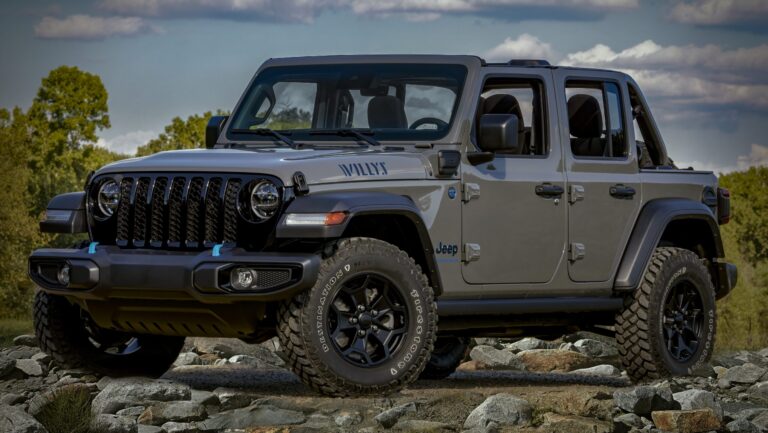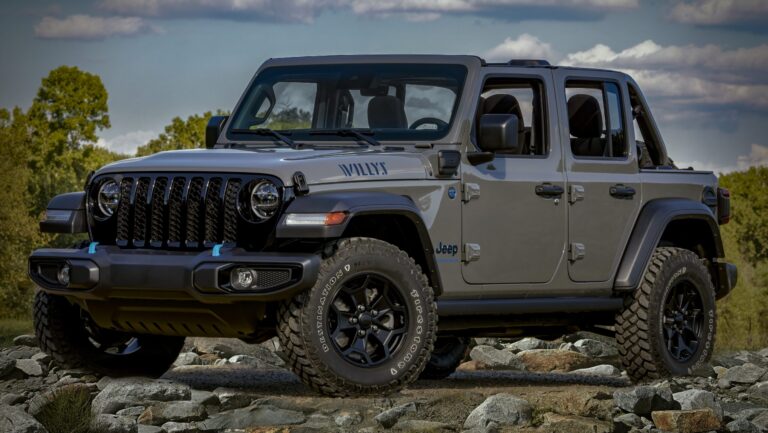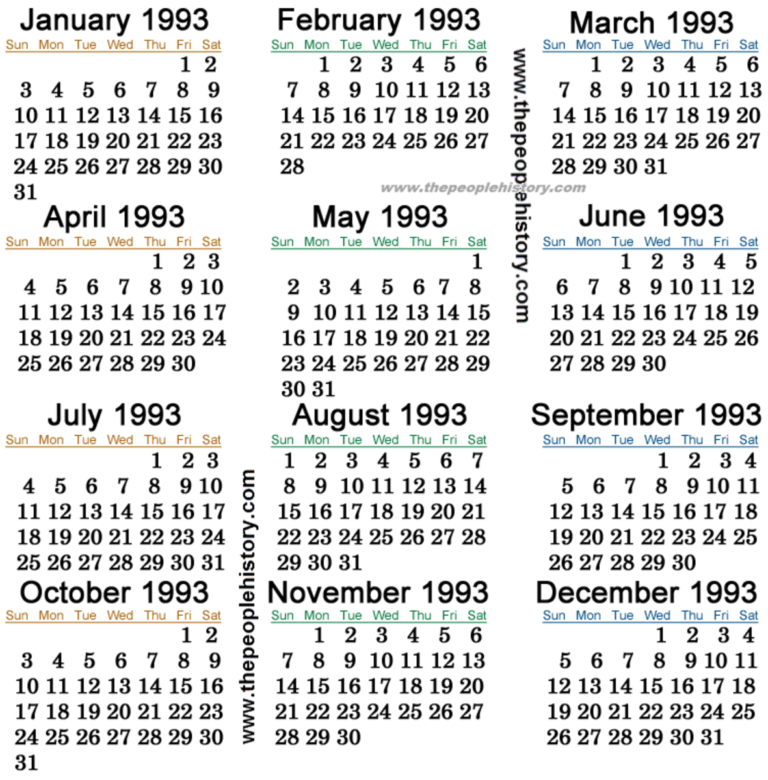What Jeep Wrangler Years To Avoid: Navigating the Off-Road Landscape of Reliability
What Jeep Wrangler Years To Avoid: Navigating the Off-Road Landscape of Reliability jeeps.truckstrend.com
The Jeep Wrangler stands as an icon, a symbol of freedom, adventure, and rugged capability. Its distinctive design and legendary off-road prowess have captivated enthusiasts for decades. However, the path to Wrangler ownership isn’t always smooth. While the allure of open-air driving and conquering challenging terrain is undeniable, not all Wrangler model years are created equal when it comes to reliability and long-term ownership satisfaction. Just like any complex machine, certain iterations of this beloved SUV have proven to be more prone to issues, leading to frustrating repairs and unexpected expenses.
Understanding What Jeep Wrangler Years To Avoid is crucial for any prospective buyer. This comprehensive guide aims to arm you with the knowledge needed to make an informed decision, helping you steer clear of common pitfalls and ensuring your journey into the world of Jeep is one of joy, not mechanical misery. By identifying the problematic years and understanding their specific weaknesses, you can save yourself significant time, money, and headaches, allowing you to fully embrace the adventurous spirit the Wrangler embodies.
What Jeep Wrangler Years To Avoid: Navigating the Off-Road Landscape of Reliability
The Early TJ Era (1997-2000): The Rust Monster Lurks
The TJ generation (1997-2006) of the Jeep Wrangler is widely celebrated for its coil-spring suspension, offering a significant leap in ride comfort and off-road articulation compared to its leaf-sprung predecessors. However, the earliest models within this generation, specifically 1997-2000, are particularly notorious for a pervasive and often catastrophic issue: frame rust.
- The Problem: The open C-channel frame design of these early TJs, combined with insufficient rustproofing from the factory, made them highly susceptible to severe corrosion, especially in regions that experience harsh winters and salted roads. Rust often begins from the inside out, making it difficult to detect until it’s critically advanced. Common failure points include the frame rails near the control arm mounts (both front and rear), the skid plate mounts, and the rear shock mounts.
- Why Avoid: While some surface rust is normal on older vehicles, the level of frame deterioration seen on these early TJs can compromise structural integrity, making the vehicle unsafe and often uneconomical to repair. Frame repair or replacement is an incredibly expensive and labor-intensive undertaking, often exceeding the vehicle’s value.
- Other Considerations (for the entire TJ era, including 2001-2006):
- "0331" Cylinder Head (2000-2001 4.0L I6): The 4.0L inline-six engine is legendary for its durability, but a specific casting number (0331) used in 2000 and 2001 models is prone to cracking, particularly between cylinders 3 and 4. This leads to coolant mixing with oil, causing significant engine damage if not caught early. While not a universal issue, it’s a known weak point.
- Automatic Transmission (42RLE): Introduced in 2003, this 4-speed automatic transmission is generally considered less robust and refined than the earlier 3-speed automatic (32RH) or the manual transmissions. While not prone to catastrophic failure, it can feel sluggish and less efficient, and requires diligent maintenance.

Practical Advice: If considering a TJ from 1997-2000, a meticulous pre-purchase inspection by a trusted mechanic, focusing heavily on the frame integrity, is absolutely non-negotiable. Be prepared to walk away if significant rust is found. For 2000-2001 models, inquire about the cylinder head if the 4.0L is present.

The Early JK Era (2007-2011): Underpowered and Prone to Quirks
The introduction of the JK generation in 2007 marked a significant shift for the Wrangler, bringing four-door Unlimited models, increased interior space, and a more modern design. However, the initial years of this new platform, specifically 2007-2011, are often cited as the most problematic due to their powertrain and early manufacturing quirks.
- The Problem: The 3.8L EGH V6 Engine: This minivan-derived engine was a major point of contention. It’s notoriously underpowered for the Wrangler’s weight and aerodynamic profile, especially with larger tires or when climbing grades. More critically, it’s known for excessive oil consumption, often requiring owners to frequently top off the oil between changes. While not always a sign of catastrophic failure, it’s an annoying and persistent issue.
- "Death Wobble" Prevalence: While the "death wobble" (a violent, uncontrollable shaking of the front end) can affect any Wrangler, it seemed particularly common and difficult to diagnose/resolve in early JK models. Often attributed to worn steering components, track bar issues, or improper alignment, it’s a dangerous phenomenon.
- Early TIPM Issues (Totally Integrated Power Module): The TIPM acts as the vehicle’s main electrical control unit. Early JK TIPMs were prone to various electrical gremlins, causing issues with fuel pump relays, wipers, lights, and more. A faulty TIPM can be expensive to replace.
- Manual Transmission (NSG370): While generally reliable, the 6-speed manual transmission in early JKs often received complaints about its vague feel, long throws, and sometimes notchy shifts.
Why Avoid: The combination of an underpowered, oil-hungry engine and common electrical and steering issues made these early JKs less than ideal. While some owners had good experiences, the increased likelihood of these problems makes them a riskier purchase.
Practical Advice: If considering an early JK, prioritize models with meticulous service records, especially concerning oil changes and steering component maintenance. A thorough test drive is essential to check for powertrain responsiveness and any signs of "death wobble."
The Early JL Era (2018-2020): New Generation Growing Pains
The JL generation, launched in 2018, brought a host of welcome improvements: more refined engines, an 8-speed automatic transmission, a significantly upgraded interior, and more advanced technology. However, as with many completely redesigned vehicles, the first few years often suffer from "early adopter" issues and manufacturing kinks that are ironed out in subsequent model years. The 2018-2020 JLs are no exception.
- The Problem: Steering System Issues: Perhaps the most widely reported issue in early JLs is related to the steering system, often manifesting as excessive play, a vague on-center feel, or even a return of the "death wobble." While some issues were traced to specific steering box designs (later updated by FCA), others were attributed to general manufacturing tolerances or component wear.
- Automatic Transmission Quirks (8HP75): While the ZF-derived 8-speed automatic is a fantastic transmission, early JLs experienced some programming quirks, leading to occasional rough shifts, hesitations, or unpredictable behavior. Software updates have addressed many of these, but some early units might still exhibit minor issues.
- Uconnect Infotainment Glitches: Early versions of the Uconnect system in the JL could be buggy, experiencing freezes, slow responses, or connectivity issues. Software updates typically resolve these, but it’s worth noting.
- Specific Engine Recalls/Issues (2.0L Turbo & eTorque): The new 2.0L turbocharged engine and the eTorque mild-hybrid system (available on both 3.6L and 2.0L) had some early recalls and isolated reports of issues related to their complexity. While the engines are generally reliable, the added technology meant more potential points of failure in the initial rollout.
Why Avoid: While the JL is a significant improvement overall, the first few model years carried the burden of being the guinea pigs for a new platform. Many issues were resolved via recalls or technical service bulletins (TSBs), but buying an early JL means a higher chance of inheriting unresolved issues or components that might fail prematurely.
Practical Advice: For early JLs, inquire about all recall work being completed. Pay close attention to the steering feel during a test drive. Check for any warning lights related to the engine or electrical system. Opting for a 2021 or newer JL generally offers a more refined and reliable experience as manufacturing processes matured.
Key Considerations When Buying Any Used Wrangler
Even when avoiding the most problematic years, buying a used Jeep Wrangler requires diligence. These vehicles are often used hard, driven off-road, and modified.
- Thorough Rust Inspection: Beyond the frame, check body mounts, floor pans, suspension components, and exhaust for rust, especially in the salt belt.
- Check for Modifications: Be wary of poorly executed lifts, oversized tires without proper re-gearing, or amateur electrical work. While modifications are common, ensure they were done professionally.
- Test Drive Extensively: Listen for abnormal noises (drivetrain, suspension), check steering precision, brake feel, and transmission shifts (both automatic and manual). Test 4WD functionality.
- Review Maintenance Records: A well-documented service history is a strong indicator of a responsible owner and a well-cared-for vehicle.
- Pre-Purchase Inspection (PPI): Always, always get a PPI by an independent mechanic who specializes in 4x4s or Jeeps. This is the single most important step to uncover hidden issues.
Practical Advice and Actionable Insights
- Prioritize 2012-2017 JK Models: If budget allows, these years offer the best balance of modern features, a much-improved powertrain (the 3.6L Pentastar V6), and generally fewer common issues than their predecessors or the very early JLs. They represent a sweet spot in the Wrangler’s evolution.
- Budget for Unexpected Repairs: Even the "good" years of the Wrangler are not immune to issues. Parts can be more expensive, and the vehicle’s off-road nature means components might wear faster. Set aside a contingency fund.
- Join Online Forums and Communities: Wrangler forums (e.g., JLWranglerForums, JK-Forum, JeepForum) are invaluable resources. You can search for specific year issues, ask questions, and learn from other owners’ experiences.
- Understand Wrangler Quirks: Wranglers are not luxury SUVs. Expect more road noise, a firmer ride, and less refined handling compared to conventional SUVs. Embrace these characteristics as part of the Wrangler experience.
Concluding Summary
The Jeep Wrangler is more than just a vehicle; it’s a lifestyle. Its unparalleled off-road capability and unique open-air driving experience make it a highly desirable choice for many. However, not all model years are created equal in terms of reliability and potential for costly headaches. By understanding What Jeep Wrangler Years To Avoid – specifically the rust-prone early TJs (1997-2000), the underpowered and quirky early JKs (2007-2011), and the "new generation" growing pains of the early JLs (2018-2020) – you can significantly improve your chances of a positive ownership experience. Thorough research, diligent inspection, and a smart buying strategy will ensure that your adventure with a Jeep Wrangler is one of exhilarating trails and memorable moments, rather than frustrating breakdowns and repair bills. Choose wisely, and enjoy the ride!
Price Table: What Jeep Wrangler Years To Avoid & Why
Please note: Prices are highly variable based on condition, mileage, trim level, modifications, and geographic location. These are very broad estimated ranges for stock or lightly modified vehicles in average to good condition.
| Year Range | Model Generation | Common Issues to Avoid/Watch For | Estimated Price Range (USD) | Key Buying Advice |
|---|---|---|---|---|
| 1997-2000 | TJ | Severe Frame Rust (primary concern), 4.0L "0331" head (2000) | $5,000 – $12,000 | Avoid unless meticulously inspected for frame rust by a specialist. If rust-free, a well-maintained one can be a gem. Check for cylinder head issues on 2000 models. |
| 2001-2006 | TJ | 4.0L "0331" head (2001), general frame rust (less severe than 97-00), 42RLE auto trans quirks | $8,000 – $18,000 | Generally better, but still prone to rust. Thorough frame inspection still vital. Good engines, but be aware of 2001 head issue and 42RLE performance. |
| 2007-2011 | JK | Underpowered 3.8L engine (oil consumption), "Death Wobble", Early TIPM electrical issues, Manual transmission feel | $10,000 – $18,000 | High risk due to 3.8L engine and common issues. Seek extensive service records. Test drive extensively for "death wobble" or steering vagueness. Consider a PPI essential. |
| 2012-2017 | JK | Oil cooler/filter housing leaks (3.6L), "Death Wobble" (less common), minor electrical | $15,000 – $28,000 | Generally considered the "sweet spot" for JK. 3.6L Pentastar is a big improvement. Still do a PPI and check for oil leaks and steering component wear. |
| 2018-2020 | JL | Steering system issues (vague/play/wobble), Early Uconnect glitches, Automatic transmission quirks, 2.0L/eTorque early recalls | $25,000 – $40,000 | Early adopter growing pains. Verify all recalls are completed. Pay close attention to steering feel during test drive. Check infotainment. Later 2020 models are generally better. |
| 2021-Present | JL | Minor recalls, some isolated issues (as with any new car) | $35,000+ | Generally more refined and reliable as early kinks are ironed out. Still recommended to check for recalls and standard used car checks. |
Frequently Asked Questions (FAQ)
Q1: Is the "death wobble" an issue on all Jeep Wranglers?
A1: The "death wobble" can theoretically affect any solid-axle vehicle, including all generations of the Jeep Wrangler (TJ, JK, JL). However, it was particularly prevalent and often difficult to resolve in the early JK models (2007-2011) and has re-emerged as a common complaint in early JLs (2018-2020), often linked to steering box design. It’s usually caused by worn or loose steering/suspension components (like the track bar, ball joints, tie rod ends) or improper alignment/tire balancing. It’s a serious safety concern that should be addressed immediately.
Q2: Which Jeep Wrangler engine is considered the most reliable?
A2: The 4.0L inline-six engine found in the TJ generation (1997-2006) is legendary for its bulletproof reliability, with millions of miles put on them. However, watch out for the "0331" cylinder head casting issue in 2000-2001 models. Among modern engines, the 3.6L Pentastar V6 (introduced in 2012 JKs and carried into the JL) is widely considered a very reliable and capable engine, though early versions had some known oil cooler/filter housing leak issues.
Q3: Are all older Wranglers rust buckets?
A3: No, not all older Wranglers are rust buckets, but it’s a significant risk, especially for the 1997-2000 TJ models. Wranglers from regions with dry climates (e.g., Southwest US) are far less likely to have severe rust issues. However, given their construction, any older Wrangler should be thoroughly inspected for rust, particularly on the frame, body mounts, and floor pans.
Q4: What’s the best year for a used Jeep Wrangler if I want a balance of reliability and modern features?
A4: Many enthusiasts and mechanics consider the 2012-2017 JK models to be the "sweet spot." These years benefit from the significantly improved 3.6L Pentastar V6 engine, a more refined interior than earlier JKs, and generally fewer major reliability issues compared to the early JKs or the very first JLs. They offer a good balance of capability, comfort, and proven reliability.
Q5: Should I avoid modified Jeep Wranglers?
A5: Not necessarily, as modifications are common and part of the Wrangler culture. However, proceed with caution. Poorly executed modifications can cause more problems than they solve, impacting reliability, safety, and performance. Look for professional installations, reputable brands, and ensure the modifications are appropriate for the vehicle’s use. A pre-purchase inspection by a mechanic familiar with modified Jeeps is highly recommended to assess the quality of any aftermarket parts and installation.
